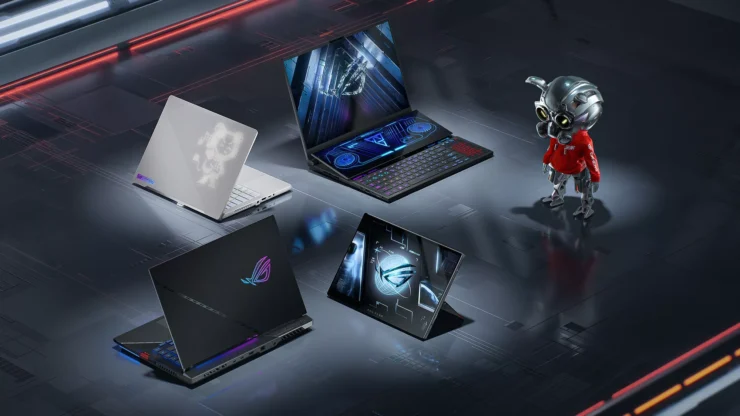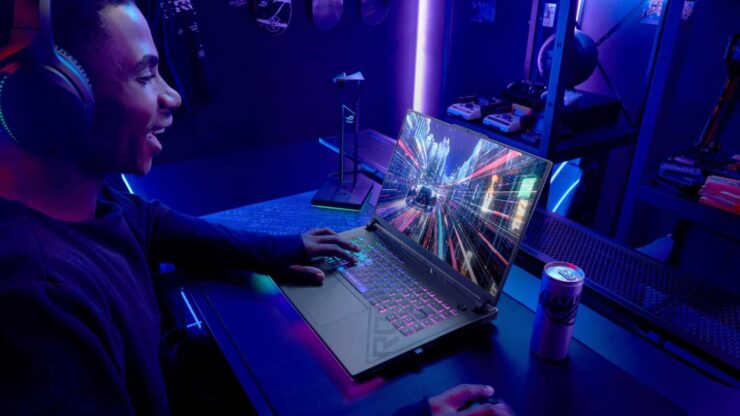In recent years, the digital realm has witnessed the meteoric rise of iGaming—a space where enthusiasts engage with online platforms to indulge in casino games, place wagers on their favorite sports teams, and even try their hand at virtual slot machines. Over the past decade, this online gaming industry has expanded at an unprecedented rate, becoming a prominent fixture in the digital entertainment landscape. Coinciding with this iGaming boom is the rise of esports. No longer relegated to niche communities, esports has grown from local competitions in community centers to massive arenas worldwide, teeming with fans cheering for professional gamers battling it out in high-stakes tournaments.
This fusion of iGaming and esports has created a vibrant and diverse ecosystem. Yet, underlying this explosion of digital entertainment is a piece of technology that has been a constant companion to many—an instrument that has continuously adapted and evolved over the years: the laptop. As we navigate this expansive domain, this article aims to explore the intricate journey of how laptops have been meticulously redesigned and optimized to meet the ever-evolving challenges and expectations of both iGaming aficionados and esports professionals.
The Growth of iGaming and Its Demands

The digital revolution saw the rise of iGaming platforms, which gradually began offering complex online casino games with rich graphics and intricate game mechanics. As players flocked to these platforms, and to platforms including casinoszonder to access reliable online casinos, there emerged a demand for laptops that could effortlessly handle these tasks. Live dealer games, which seamlessly blend the worlds of online and offline gambling, added another layer of complexity. With real-time video streaming, interaction capabilities, and high-quality graphics, these games required a laptop with better performance, speed, and connectivity.
Esports Enters the Arena
Esports, a term that encapsulates the competitive and professional realm of video gaming, has dramatically shifted our understanding of what gaming truly entails. Once, it was simply a pastime, where enthusiasts would gather in living rooms, passionately competing against friends in friendly video game bouts. Today, it has evolved into a colossal industry, transcending geographical boundaries and drawing in audiences in the millions. Massive arenas, once reserved for traditional sports and music concerts, are now frequently filled to capacity with fervent fans, all congregated to watch elite players face off in tournaments that boast prize pools in the millions of dollars.
However, as the stakes have risen, so have the demands on the players. Unlike the casual iGamer who might be content with a laid-back gaming experience, an esports professional’s requirements are intense and non-negotiable. Every move they make, every strategy they deploy, hinges on the accuracy, speed, and reliability of their gaming equipment. Even the minutest lag, or the most insignificant graphical distortion, can spell disaster, turning potential champions into mere participants. This heightened need for perfection posed a daunting challenge to the tech industry, especially laptop manufacturers. They were tasked with a seemingly contradictory goal: engineer a laptop that embodies the portability intrinsic to its design, yet possesses the raw, unbridled power of a dedicated, high-end gaming desktop. The industry’s response to this challenge has been nothing short of revolutionary, pushing the boundaries of innovation and design.
Modern Laptops: Built for iGaming and Esports

Enter the era of gaming laptops – devices engineered specifically with gaming in mind. These aren’t your run-of-the-mill laptops. They boast faster processors, top-of-the-line graphics cards, and enhanced cooling systems. Features like high refresh rate screens ensure smooth gameplay, while customizable RGB keyboards allow players to set up macro commands for complex in-game actions.
Popular brands have recognized the growing demand and have jumped into the fray. For instance, Alienware’s sleek designs and raw power make it a favorite among many gamers. ASUS’s ROG series balances aesthetics with performance, delivering stunning visuals and rapid response times. Acer’s Predator range and MSI’s gaming laptops also offer impressive specifications, with customizable options for the discerning gamer.
The Future: Where Laptops and iGaming Might Go Next
The relentless march of technology has consistently redefined the boundaries of what’s possible, and in the realm of gaming laptops, this evolution promises to usher in unprecedented capabilities. One of the most groundbreaking innovations on the horizon is cloud gaming. This paradigm shift proposes to drastically change our relationship with hardware. Instead of being tethered to the inherent limitations of a device’s processing power, the computational heavy lifting could be offloaded to state-of-the-art servers housed in data centers across the globe. The result? Pristine, high-definition visuals streamed in real-time to the player’s device. This technological marvel would democratize gaming, enabling even those with modest, entry-level laptops to dive into the most graphically demanding and resource-intensive games, the only prerequisite being a robust and stable internet connection.
Yet, as transformative as cloud gaming promises to be, it’s just one facet of the future. Emerging technologies like Augmented Reality (AR) and Virtual Reality (VR) are poised to reshape the very fabric of the gaming experience. Instead of merely observing virtual worlds, players might soon be seamlessly integrated into them. As AR and VR inch closer to becoming household names, the demands on the devices we use to access these realms will evolve. Laptops of the not-so-distant future could sport advanced sensors to detect and interpret physical movements, translating them into in-game actions. Furthermore, built-in VR capabilities might become a standard feature, eliminating the need for cumbersome external devices. Enhanced haptic feedback, spatial audio systems, and adaptive displays could further blur the lines between the digital and physical worlds, creating immersive experiences previously consigned to the realms of science fiction. As we stand on the cusp of these exciting advancements, one thing remains certain: the nexus of laptops and iGaming is on the verge of an exhilarating transformation.
Prominent Laptop Brands Stepping Up

Well-known laptop brands have always been at the forefront of integrating new technologies. Brands like Apple, with their MacBook series, may not specifically target gamers, but they’ve consistently pushed the boundaries of what’s possible with laptop hardware and software. Lenovo’s ThinkPad and Yoga series, while renowned for their business applications, boast specs that can easily support gaming. HP, with its Omen series, has made a clear foray into the gaming domain, offering powerful machines that cater to both casual iGamers and esports professionals.
As the demands of iGaming and esports grow and evolve, so too will the laptops that power these domains. From the casual player looking to unwind after a long day to the professional esports athlete competing on the world stage, the laptop remains a steadfast companion, continually adapting to meet the ever-changing needs of the gaming community.

